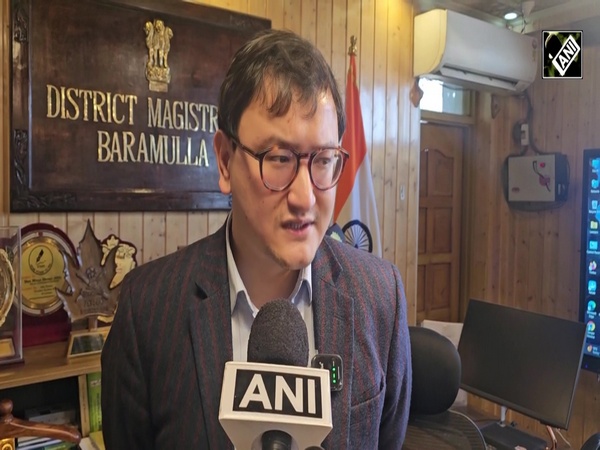Cultural tapestry, potential of Northeast India showcased at Ashtalakshmi Mahotsav in Delhi
Dec 10, 2024

New Delhi [India], December 10 : The first edition of Ashtalakshmi Mahotsav, showcasing the vibrant tapestry and diversity of northeastern region, comes to a close with a grand success.
The event whose curtains came down on Sunday after a three-day extravaganza brought together the eight diverse states of the region, each showcasing its unique treasures--handwoven textiles, organic produce (vegetables, fruits, spices), cuisine, music, art, folk music and dance, and cultural legacy, among others.
But beneath the beauty of these handcrafted products lies a deeper story of resilience and heritage, guided by the vision for a prosperous future under the leadership of Narendra Modi. This event was brought to Delhi to give a platform to the artisans, entrepreneurs, so that they can market their products.
Ashtalakshmi Mahotsav hosted an exclusive Buyer Seller Meet that brought together buyers from the northeastern states and seller from various part of the country. The event, held at the iconic Bharat Mandapam, aimed to foster long-term business relationships between artisans and buyers.
Ashtalakshmi Mahotsav, organized under the patronage of Department of Northeastern Region (DoNER) emerged as a celebration of culture, craftsmanship, and empowerment.
During the three-day festival, several technical session centered around issues like women leadership, technology adoption, healthcare, energy, culture, arts, and sports, were organised with a view to promote sustainable growth and development in the region.
On Day 1, Friday, Prime Minister Narendra Modi graced the event with his presence. He walked through each of the state pavilion put up at the festival that showcased wide range of made in northeast India products. The prime minister also listened to the artisans about their artwork, witnessed a spectacular symphony of music, before addressing the gathering.
Prime Minister Modi expressed his firm belief that in the times to come, India's growth story also belongs to Eastern India, and Northeast in particular. He added that in the past decades, India had seen the emergence of big cities like Mumbai, Ahmedabad, Delhi, Chennai, Bengaluru, Hyderabad. PM Modi stressed that in the coming decades, India will see the new potential of cities like Guwahati, Agartala, Imphal, Itanagar, Gangtok, Kohima, Shillong and Aizawl and events like Ashtalakshmi would play a major role in that.
Prime Minister Modi urged the citizens to make the products of northeast India a part of their lifestyle.
The Prime Minister desired that the products of northeast India should reach every market of the world and in this direction the products of every district were being promoted under the One District One Product campaign. 
"I promote the mantra of Vocal for Local for the products of North East," exclaimed PM Modi. He said that he tried to present the products from the northeast to the foreign guests and this would give recognition to the wonderful art and craft of the North East at the international level.
Prime Minister Modi emphasized how northeast India, with its abundant natural resources and strong commitment to organic farming, is uniquely positioned to drive India's vision for a healthier and more sustainable future.
From millet and rice to bamboo and spices, these precious resources are more than just products--they embody the region's rich identity and potential, and many of those GI-products were on display and sale.
The Geographical Indication (GI) tag, which protects and celebrates these treasures, is empowering local communities and ensuring that North East India's cultural heritage thrives on a global stage. Through this recognition, these products are not only preserved but also given the opportunity to shape the region's future, creating new pathways for growth and prosperity.
In Arunachal Pradesh, the Adi Kekir ginger, grown in the Dibang Valley, tells a story of traditional knowledge passed down through generations. Cultivated by the Adi tribe, this aromatic ginger is renowned for its medicinal properties. Along with this revered ginger, products like Wakro Orange and Monpa Maize have earned the prestigious GI tag, ensuring that these agricultural gems gain recognition not only across India but on the global stage.
Sikkim, known for its organic farming practices, is home to the Dalle Khursani, a fiery red pepper that has earned fame far beyond the borders of India. Alongside it, Sikkim Large Cardamom, Temi Tea, Sikkim Orchids, and Sikkim Orange are becoming more than just products--they're symbols of a sustainable future.
Nagaland, famous for the Naga King Chilli or Raja Mircha, is home to one of the hottest chilies in the world. In addition to the Raja Mircha, other GI-tagged products from Nagaland include Naga Tree Tomato, Chak Hao rice, and Naga Cucumber. These products highlight the region's agricultural potential and are becoming increasingly valuable.
From Assam, the Kaji Nimu, a distinctive variety of lemon celebrated for its size, aroma, and sharp tang, reflects the state's rich agricultural heritage. Larger and more flavorful than most other lemon varieties, the Kaji Nimu is an essential ingredient in Assamese cuisine and traditional remedies. The state is also known for its Tezpur Litchi, Joha Rice, Bodo Keradapini spices, and Boka Chaul rice, all of which have earned GI recognition.
Ashtalakshmi Mahotsav turned out to be big stage for these GI-tag produce to be showcased and traded. As PM Modi stated, the northeast India region holds the key to India's vision for a healthier and more sustainable future.
















